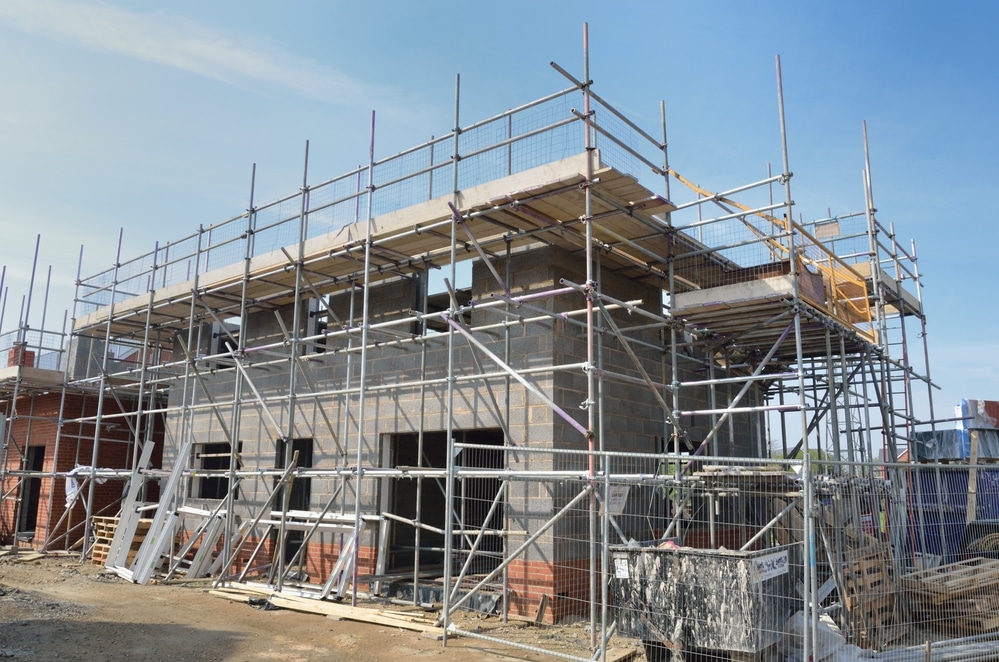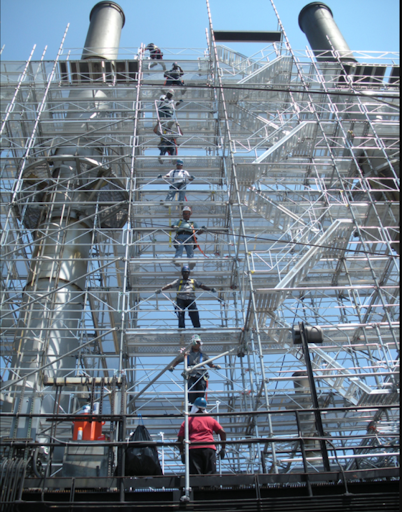Checking Out the Numerous Kinds Of Scaffolding Made Use Of in Construction Tasks
The construction industry depends greatly on numerous kinds of scaffolding to fulfill particular job requirements, each offering distinctive advantages and applications. Standard framework scaffolding gives a strong foundation for general tasks, while suspended scaffolding is necessary for job on skyscraper structures. Various other alternatives, such as system and rolling scaffolding, accommodate efficiency and flexibility, specifically. The cantilever alternative proves invaluable in city environments where space is constricted. Comprehending the subtleties of these scaffolding kinds is important for optimizing security and performance on construction websites, prompting a better assessment of their distinct characteristics and applications.

Standard Frame Scaffolding
Typical structure scaffolding is among the most widely made use of methods in the building and construction industry as a result of its effectiveness and versatility. This system includes upright and straight frames that are set up to produce a secure platform for products and employees. The main elements consist of upright blog posts, straight journals, and diagonal dental braces, which together supply a strong framework that can support considerable loads.
One of the crucial benefits of standard frame scaffolding is its adaptability to various building and construction jobs, varying from property structures to huge industrial structures. The modular design enables simple setting up and disassembly, making it reliable for both short-term and long-term projects. Additionally, the system can be customized in elevation and width, suiting different building designs and website conditions.
Safety and security is paramount in scaffolding applications, and conventional frame systems are furnished with guardrails and toe boards to avoid drops and make sure worker security. Moreover, normal examinations and adherence to security policies are essential in maintaining the integrity of the scaffold. On the whole, standard structure scaffolding remains a basic selection in the building and construction sector, giving a trusted platform for labor and improving total task performance

Suspended Scaffolding
Suspended scaffolding uses a special service for building and construction tasks that call for access to raised surfaces, especially in scenarios where typical frame scaffolding may be impractical. This type of scaffolding is generally suspended from the roof covering or upper levels of a framework, utilizing a system of ropes, systems, and pulley-blocks to produce a functioning area that can be adjusted to different heights.
Among the primary benefits of put on hold scaffolding is its flexibility. It can be easily repositioned or decreased to suit modifications in building and construction demands, making it suitable for tasks such as home window installation, frontage work, and upkeep on skyscraper buildings. Furthermore, the marginal impact of suspended scaffolding enables better use of ground room in urban settings, where space is commonly minimal.
Safety and security is an important consideration in making use of put on hold scaffolding. Correct rigging and anchoring systems need to be utilized to make sure stability and prevent crashes. Operators needs to also be learnt the safe use this tools. In general, suspended scaffolding offers a effective and efficient service for accessing hard-to-reach areas in numerous construction scenarios, boosting both performance and safety and security on website.
System Scaffolding
System scaffolding, often concerned as a contemporary service in the scaffolding market, contains pre-engineered components that can be swiftly constructed and adjusted for various building and construction tasks. Scaffolding. This sort of scaffolding is defined by its modular style, which enables for flexibility and performance on job websites, accommodating different elevations and structural requirements
Commonly made from high-strength steel review or aluminum, system scaffolding offers improved durability and security. The elements include upright posts, straight ledgers, and angled braces, which interconnect securely, making certain a durable framework. The style frequently incorporates standardized installations, streamlining setting up and disassembly processes, thus minimizing labor time and expenses.

Rolling Scaffolding
Rolling scaffolding is a functional alternative to conventional set scaffolding, created for flexibility and simplicity of use on building websites. This sort of scaffolding consists of a platform supported by frames with wheels, allowing employees to quickly move it as required. The wheelchair function considerably boosts performance, as it decreases downtime connected with disassembling and assembling repaired scaffolding.
Generally constructed from light-weight materials such as aluminum or steel, rolling scaffolding provides a durable yet portable service for projects needing regular repositioning - Scaffolding. It is especially useful in jobs such as paint, drywall setup, and electric work, where accessibility to numerous heights and areas is required
Safety and security is vital in rolling scaffolding layout, with functions such as securing wheels to prevent unintentional activity when in use, and guardrails to you can try these out shield workers from drops. Additionally, lots of designs are flexible in height, accommodating different project requirements.
Cantilever Scaffolding

The design of cantilever scaffolding normally includes utilizing arms or braces secured to a structure or framework, making it possible for the system to extend outward safely. Safety is extremely important; thus, these scaffolds need to be engineered to endure environmental problems and numerous lots. Routine inspection and maintenance are important to guarantee structural honesty and employee safety.
Cantilever scaffolding is preferred for its flexibility and reliable usage of room, making it a prominent choice in urban environments where room restraints are common. Moreover, it facilitates less complicated access to high altitudes, ultimately adding to the general efficiency of construction tasks. Just like all scaffolding kinds, correct training and adherence to safety requirements are important for employees utilizing cantilever scaffolding.
Conclusion
Traditional structure scaffolding offers stability, while suspended scaffolding uses adaptability for raised tasks. System scaffolding facilitates fast assembly, and rolling scaffolding improves wheelchair for differing work settings.
Standard framework scaffolding supplies a strong foundation for general jobs, while put on hold scaffolding is essential for work on skyscraper structures.Moving scaffolding is a functional choice to traditional fixed scaffolding, developed for mobility and convenience scaffolding questions teaching of use on building and construction sites. As with all scaffolding types, appropriate training and adherence to safety criteria are vital for workers using cantilever scaffolding.
Conventional structure scaffolding offers stability, while suspended scaffolding supplies adaptability for raised jobs. System scaffolding assists in quick setting up, and rolling scaffolding boosts flexibility for differing work environments.